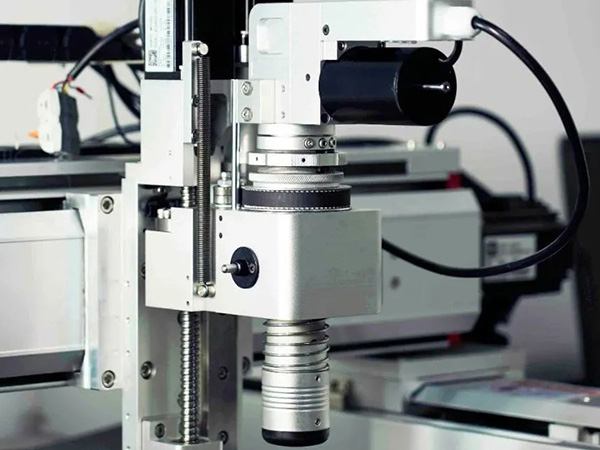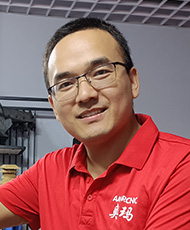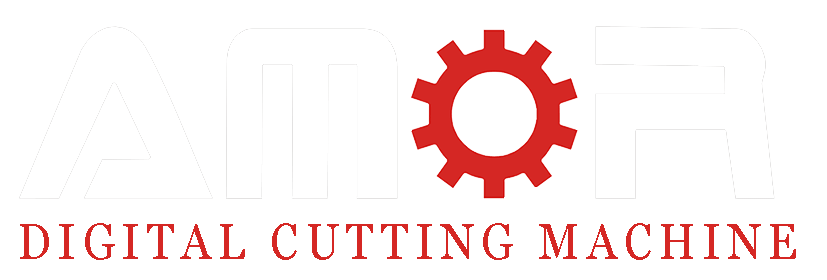What are the components of an oscillating knife cutting machine?
Oscillating knife technology began to develop in the 1990s and has now evolved to a very mature level. In addition to high speed and high precision, oscillating knife technology can also be used with loading and unloading equipment and vision cameras to form an automated unmanned processing platform. It reduces manpower and improves efficiency for you.
An oscillating knife cutting machine consists of 5 components: transmission system, knife cutting system, vacuum adsorption system, control system and processing platform. Among them, the parts that have the greatest impact on processing accuracy and speed are the drive motor, cutting system and control system.

The motor is responsible for providing power for the movement of the transmission shaft. The quality of the motor directly determines the speed and accuracy of the movement axis. In addition to the plane movement in the X and Y axis directions, the transmission shaft also includes the rotation and up and down movement of the oscillating cutting tool. , is also an important factor in accuracy and speed; the control system is the brain of the equipment. If the operator wants to adjust the basic motion parameters of the machine tool, as well as complex processing techniques, he needs the help of the motion control system.
What materials can the oscillating knife cutting machine be used to cut?
Oscillating knife cutting machines are mainly used in the processing of non-metallic flexible materials. The edges of the cut products are smooth and burr-free, do not require secondary processing, and will not deform without thermal reaction. Therefore, they are widely used in many industries such as clothing, advertising, car decoration, cartons, etc. Has a very wide range of applications.

CNC oscillating knife cutting machines are used in multiple industries:
- Clothing industry. Used for cutting cotton, linen, silk, chemical fiber, woolen, denim, chiffon, leather, etc.
- Automobile industry. Used for cutting car seat covers, wire mats, steering wheel covers, shade cloth, car stickers, etc.
- Packaging industry. Used for cutting corrugated paper, gray cardboard, corrugated paper, EPE, EVA, foam, etc.
- Sealing gasket. Industry used for cutting asbestos, asbestos-free, graphite composite, rubber, PTFE, etc.
- Advertising industry. Used for cutting advertising KT boards, stickers, cardboard, film, EVA materials, etc.
- Home interior decoration industry. Used for cutting table mats, upholstered sofas, non-slip mats, carpets, curtains, etc.
- Sound insulation and thermal insulation industry. Used in polyester fiber sound-absorbing panels, rubber and plastic sponges, glass fiber cotton panels, aluminum silicate needle punched blankets, polyester fiber cotton, etc.
What kinds of tools are available for the oscillating knife cutting machine?
The oscillating knife cutting machine has a rich variety of cutting tools, and the range of materials it can cut covers most flexible materials. Its cutting technology can also meet the processing needs of most flexible materials.

9 commonly used tool types for oscillating knife cutting machines:
01. Vibrating knife: pneumatic vibrating knife, electric vibrating knife
Cutting process: full cut
Suitable materials: The pneumatic vibrating knife is suitable for cutting sponges, foam boards and other materials with large thickness, flexibility and high elasticity; the electric vibrating knife is suitable for cutting medium-density materials such as corrugated paper, leather, sealing gaskets and advertising composite materials.

Processing method: The vibrating knife achieves rapid cutting of materials by vibrating the cutter head up and down at high frequencies. Depending on the processing method, the vibrating knife is divided into pneumatic vibrating knives and electric vibrating knives. The pneumatic vibrating knife uses compressed air to drive the blade to vibrate up and down at high frequency to cut the material, with the amplitude up to about 10mm. The electric vibrating knife uses a motor to drive the blade to reciprocate at a high speed to cut the material. The vibrating knife is currently a cutting tool widely used in flexible material cutting processes.

02. Round knife
Cutting process: full cut
Suitable materials: wool, denim, cotton and linen, UV cloth, chemical fiber, flag cloth and other fabrics.
Processing method: The motor drives the blade to rotate at high speed to cut the material, especially suitable for cutting cloth. With different blades, it can cut different materials. It has been widely used in many garment processing fields and has achieved good results.

03. Bevel cutter
Cutting process: V-groove
Suitable materials: gray cardboard, corrugated paper, thick cardboard and other packaging materials.
Processing method: By changing the installation angle of the blade (0°, 15, 22.5°, 30°, 45°, 60°), V-shaped grooves and bevels of different specifications can be processed so that the cardboard material can be cut along the groove line Folded into three-dimensional edges and corners, it has become a common packaging box shape in our daily life.

04. Milling cutter
Cutting process: cutting
Suitable materials: cutting of hard materials such as acrylic boards, PVC, wooden boards, ABS boards, and two-color boards.
Processing method: cylindrical shape, with a cutting edge at the bottom of the tool holder, which allows it to perform rotational motion for cutting. The milling head uses a high-power high-speed motor with a maximum speed of 60,000RPM, which has very good cutting performance.
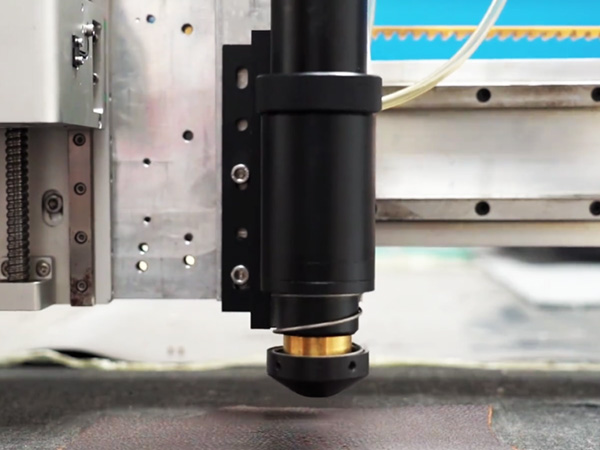
05. Punching
Cutting process: punching
Suitable materials: genuine leather, imitation leather, PU, PVC, kraft paper and other materials.
Processing method: The motor drives the spindle to rotate at high speed, and the cylinder drives the spindle to move up and down quickly, allowing the punch to punch the material.
06. Half cutter
Cutting process: half cut
Suitable materials: car stickers, reflective stickers, magnetic stickers, PP adhesive, label stickers and other self-adhesive materials.
Processing method: Material cutting is achieved through the rapid movement of the tool, and the material is die-cut to the last layer (backing paper), that is, the last layer is not cut.

07. Creasing wheel
Cutting process: creasing
Suitable materials: corrugated paper, cardboard, corrugated plastic board and other materials.
Processing method: The circular wheel of the pressing wheel rolls over the material. The cutting edge of the wheel has a certain hardness, which creates an indentation effect on the material so that the sheet can be bent and formed according to the predetermined position.
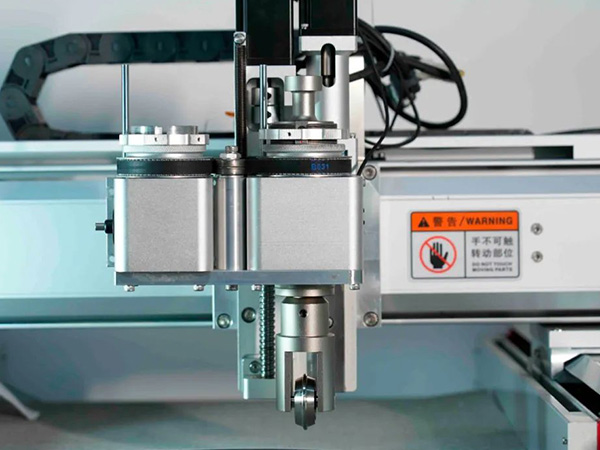
08. Marker
Cutting Process: Marking
Suitable materials: applied to shoe uppers, luggage leather, mesh and other materials.
Processing method: Marking applied to cut pieces, using compressed gas (electromagnet or knife holder) to drive a pen to draw stitch alignment marks on the material being cut.
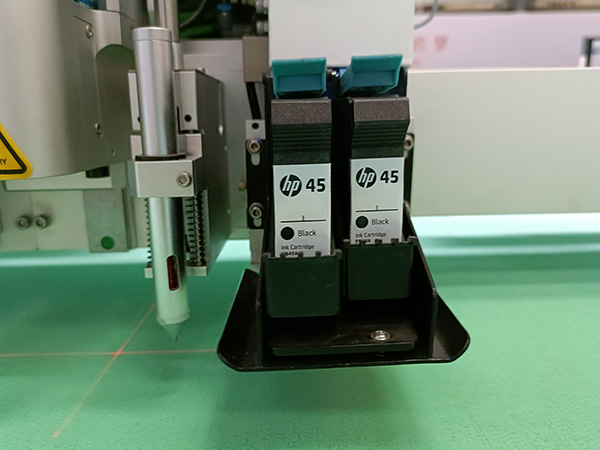
09. Countertop collector
Tool technology: collecting table flatness data
Collection method: The sensor collects the flatness data of the table, allowing the system to automatically compensate for the relative drop of the tool during processing, which can effectively solve the problem of uneven table surfaces.
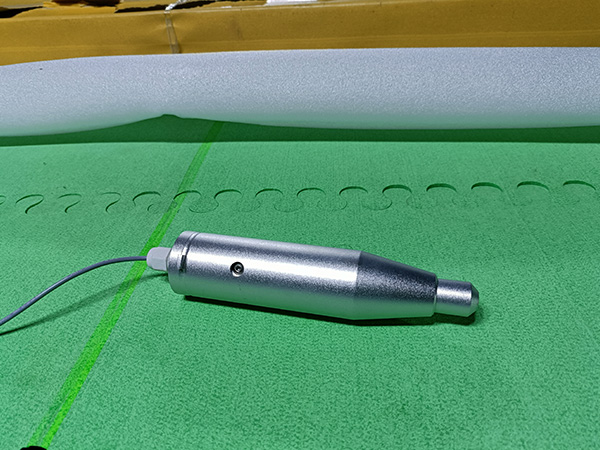
How to realize the multiple functions of the oscillating knife cutting machine?
In order to realize that one machine can meet the processing needs of customers with various materials and processes, we can configure a variety of tools on an oscillating knife cutting machine to achieve this purpose.
01. Single tool holder + multiple cutting tools;
A standard tool holder can be configured with a variety of cutting tools, and then manually switched according to the different materials being processed. For example: electric oscillating tools, pneumatic oscillating tools, driving wheel cutter tools, etc.;
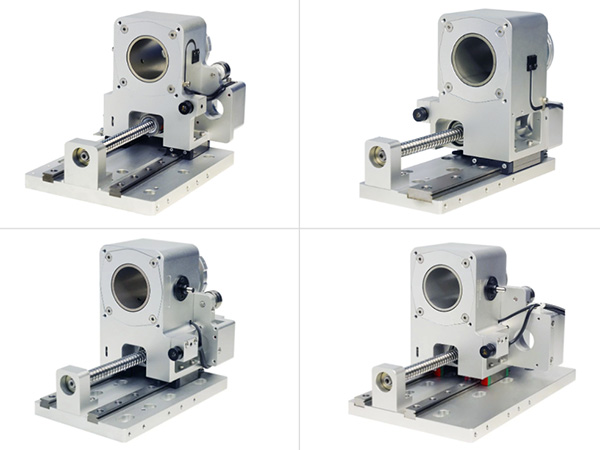
02.Double knife holder + cutting tool + grooving/beveling tool;
It can clamp two different processing tools at the same time to realize automatic switching of two different processes.
Pressing wheel and vibrating knife: The pressing wheel rolls through the corrugated paper through a circular wheel to produce an indentation effect; the vibrating knife uses a motor to drive the blade to reciprocate at a high speed to completely cut the contour.
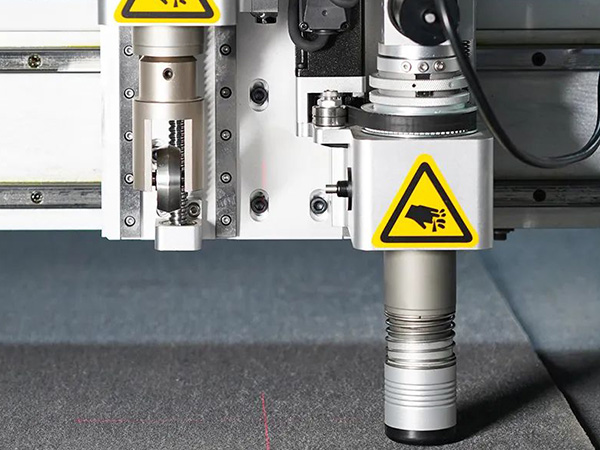
Bevel cutter and vibrating cutter: The bevel cutter processes V-shaped grooves and bevels of different specifications by changing the installation angle of the blade; the vibrating cutter uses a motor to drive the blade into ultra-high-speed reciprocating motion to completely cut the contour.

Drag knife and half cutter. The half-cutting knife automatically adjusts the position of the blade tip to accurately position and cut the material to achieve half-cutting of the material; the dragging knife can achieve rapid cutting of the material through the rapid movement of the knife.
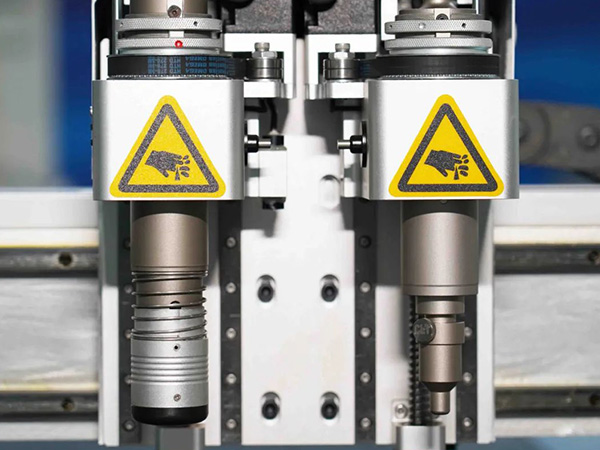
03. Three tool holders + cutting tools + grooving/beveling tools + milling cutter tools;
In order to meet the cutting needs of a variety of materials and processes, it can be equipped with three tool holders and multiple processing tools to develop the maximum use value of a machine.
In addition to two conventional tool holders and a variety of tools, it is also equipped with a milling cutter tool. For materials with higher hardness, the milling cutter is more rigid. By using a high-power high-speed motor to drive the milling cutter to rotate at high speed, the material can be cut. It is especially suitable for cutting hard materials.

04. A variety of cutting tools + punching + marking tools;
In addition to installing independent tool holder tools, you can also choose punching and marking tools to meet more processing needs.

05. Cutting system + intelligent positioning system/visual recognition system.
When you purchase an oscillating knife cutting machine, in addition to enhancing its cutting capabilities, you can also expand the intelligence of the machine, such as configuring the feeding system, nesting system, intelligent identification system, projection positioning system and other functions to realize the intelligence of the machine. Streamline work and make difficult tasks easier.


